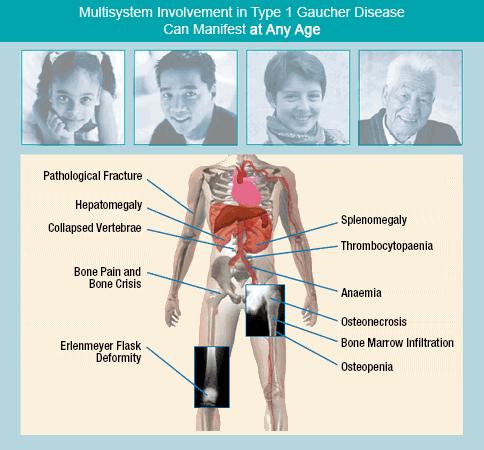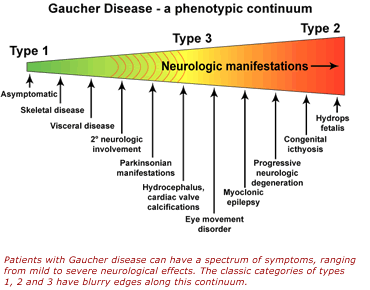Gaucher disease
The most common
lysomal storage disease (LSD) in the world which affects all ethnic groups. It is present in approximately 1 in
20,000 live births.
It is an
autosomal recessive disorder, both parents must carry the Gaucher gene in order
to pass it on to their children.
Gaucher disease,
also known as glucocerebrosidase deficiency, occurs when a lipid called
glucosylceramide accumulates in the bone marrow, lungs, spleen, liver and
sometimes the brain. Gaucher disease is caused by mutations in a gene called
GBA. Changes in the GBA gene cause low levels of glucocerebrosidase.
Despite the fact
that the disease consists of a phenotype, with varying degrees of severity, it
has been sub-divided in three subtypes according to the presence or absence of
neurological involvement. Depending on the type, Gaucher disease symptoms can include
fatigue, anemia, easy bruising and bleeding, severe bone pain and easily broken
bones, distended stomach due to an enlarged spleen and more.
Treatment:
Enzyme replacement
therapy
Substrate replacement
therapy
Bone Marrow
Transplant


No comments:
Post a Comment